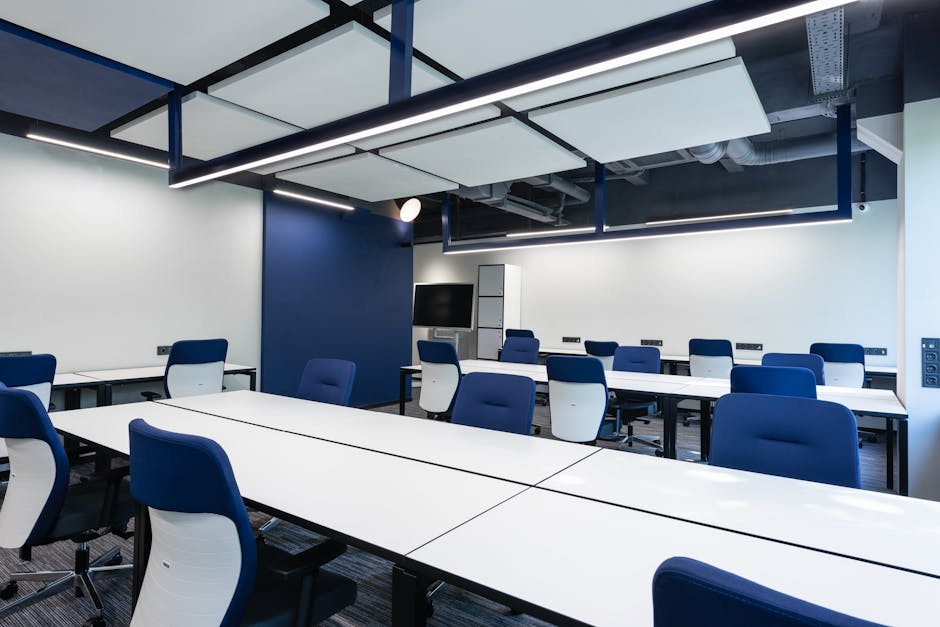Unlocking the Power of Flexible Office Spaces: 5 Tips for Optimizing Your Workplace
"In today's dynamic work environment, flexible office spaces are becoming increasingly popular. This article explores the benefits of flexible workspaces and provides 5 actionable tips for creating an adaptable, efficient, and collaborative office that empowers employees and drives business success. "

In the rapidly evolving world of work, traditional office setups are giving way to more flexible and adaptable workspaces. Gone are the days of rigid cubicles and assigned desks; today's employees crave the freedom to choose where and how they work. Flexible office spaces have emerged as a solution to meet these changing needs, offering a dynamic environment that fosters collaboration, productivity, and employee satisfaction.

What is a Flexible Office Space?
A flexible office space is a workspace that offers employees a variety of options for where and how they work within the office. Unlike traditional offices with assigned desks, a flexible workspace allows individuals to select the space that best suits their current task, whether it's a focus area for deep work or a collaborative zone for team brainstorming.
Flexible workspaces often incorporate elements such as:
- Hot desks: Desks that can be booked on-demand for a few hours or an entire day
- Meeting rooms: Easily reservable spaces for team gatherings or client meetings
- Open offices: Adaptable floor plans that can be reconfigured based on changing needs
- Huddle spaces: Informal areas for impromptu discussions and quick collaborations
The Benefits of Flexible Office Spaces
Implementing a flexible workspace design offers numerous advantages for both employees and businesses:
-
Business adaptability: Flexible offices enable companies to easily expand or contract their workspace as needs change, without the hassle of searching for additional real estate.
-
Productivity and efficiency: By providing employees with the freedom to choose their work environment, flexible spaces promote more productive and efficient work habits.
-
Collaboration and innovation: Flexible workspaces encourage serendipitous interactions and cross-functional collaboration, leading to increased innovation and problem-solving.
-
Increased employee satisfaction: When employees have control over their work environment and access to a variety of spaces, they are more likely to enjoy coming into the office, resulting in higher job satisfaction and retention.

5 Tips for Creating a Flexible Office Space
Ready to transform your workplace into a flexible, productive environment? Here are five tips to help you optimize your office space:
-
Make data-driven decisions: Utilize workplace analytics to understand how your space is being used and make informed decisions about layout and design.
-
Invest in adaptable furniture: Choose furniture that is easy to move and reconfigure, such as rolling chairs, movable dividers, and adjustable tables, to allow for quick space transformations.
-
Empower employees with technology: Provide employees with tools like room booking systems and interactive workplace maps to easily find and reserve available spaces that meet their needs.
-
Prioritize tidiness: Encourage a culture of cleanliness and organization to ensure that flexible spaces remain inviting and functional for all users.
-
Foster a flexible workplace culture: Establish best practices for space use and encourage employees to explore different areas of the office to find their ideal work environment.

Creating a flexible office space may seem daunting at first, but with the right approach and tools, it can be a game-changer for your business. By embracing a flexible workspace design, you can boost employee satisfaction, productivity, and collaboration while also increasing your company's agility and adaptability in the face of change.

In conclusion, flexible office spaces are the future of work. By implementing these five tips and leveraging the power of adaptable workspaces, you can create a dynamic, engaging office environment that empowers your employees and drives business success. Embrace the flexibility revolution and watch your workplace thrive!
Want to learn more about Desk Booking?
Explore our complete guide with more articles like this one.


